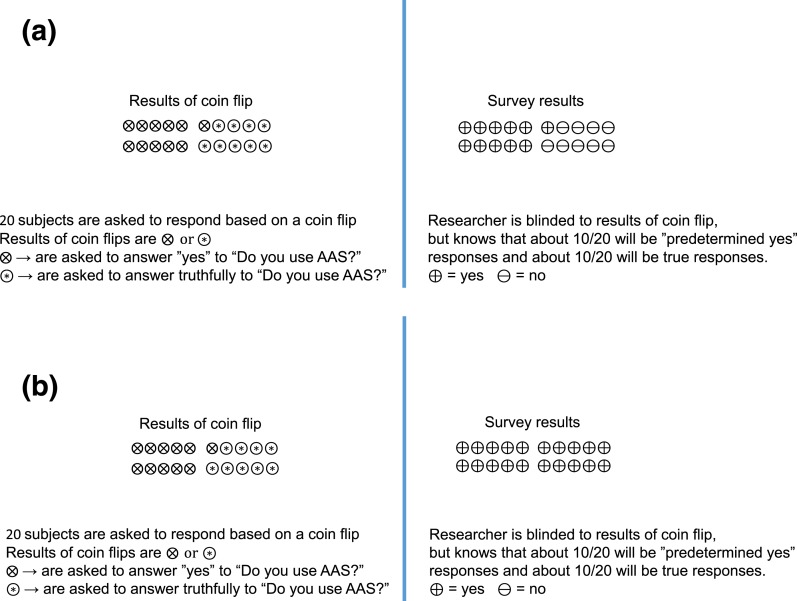Figure 1.
Simplified description of randomized response surveys. (A) Scenario of randomized response survey in which no one in a group of 20 uses AASs. In this simplified diagram, each subject responds to a question with a predetermined answer or truthfully based on the results of a coin flip that the researcher cannot see. While protecting anonymity of individual respondents, the reviewer can determine that a very small percentage of the truth responders use AASs. This method provides a range of likely percentages based on statistical analysis of the probability of the results for a given number of coin flips. (B) Scenario of randomized response survey in which everyone in a group of 20 uses AASs. In this simplified diagram, each subject responds to a question with a predetermined answer or truthfully based on the results of a coin flip that the researcher cannot see. While protecting anonymity of individual respondents, the reviewer can determine that a very large percentage of the truth responders use AAS.

